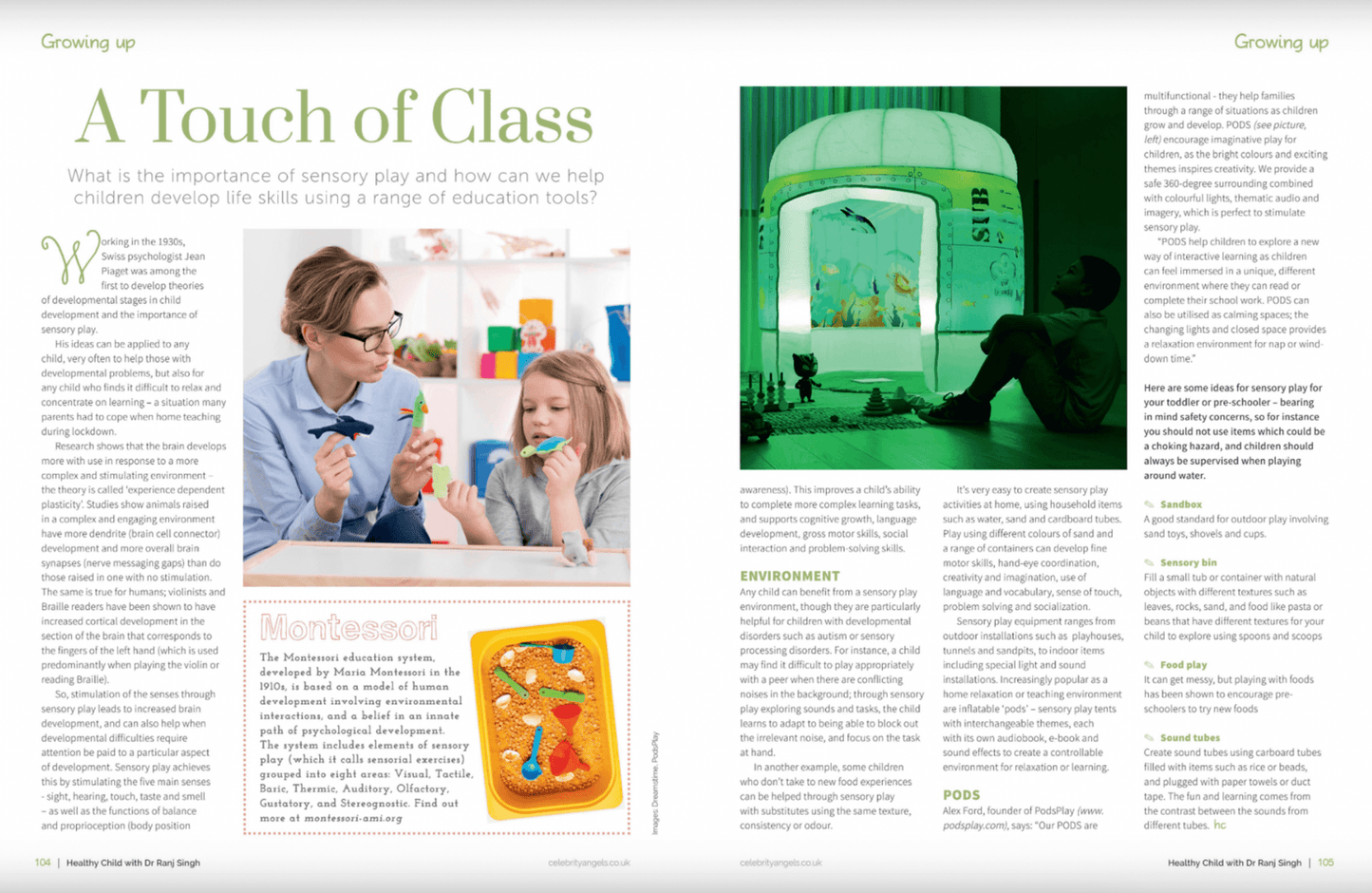
"Any child can benefit from a sensory play environment, though they are particularly helpful for children with developmental disorders such as autism or sensory processing disorders. For instance, a child may find it difficult to play appropriately with a peer when there are conflicting noises in the background; through sensory play exploring sounds and tasks, the child learns to adapt to being able to block out the irrelevant noise, and focus on the task at hand.
In another example, some children who don't take to new food experiences can be helped through sensory play with substitutes using the same texture, consistency or odour.
It's very easy to create sensory play activities at home, using household items such as water, sand and cardboard tubes. Play using different colours of sand and a range of containers can develop fine motor skills, hand-eye coordination, creativity and imagination, use of language and vocabulary, sense of touch, problem solving and socialisation. Sensory play equipment ranges from outdoor installations such as playhouses. tunnels and sandpits, to indoor items including special light and sound installations. Increasingly popular as a home relaxation or teaching environment are inflatable 'pods' - sensory play tents with interchangeable themes, each with its own audiobook, e-book and sound effects to create a controllable environment for relaxation or learning.
PODS
Alex Ford, founder of PodsPlay www.podsplay.com), says: "Our PODS are multifunctional - they help families through a range of situations as children grow and develop. PODS (see picture, left) encourage imaginative play for children, as the bright colours and exciting themes inspires creativity. We provide a safe 360-degree surrounding combined with colourful lights, thematic audio and imagery, which is perfect to stimulate sensory play.
"PODS help children to explore a new way of interactive learning as children can feel immersed in a unique, different environment where they can read or complete their school work. PODS can also be utilised as calming spaces; the changing lights and closed space provides a relaxation environment for nap or wind-down time."
